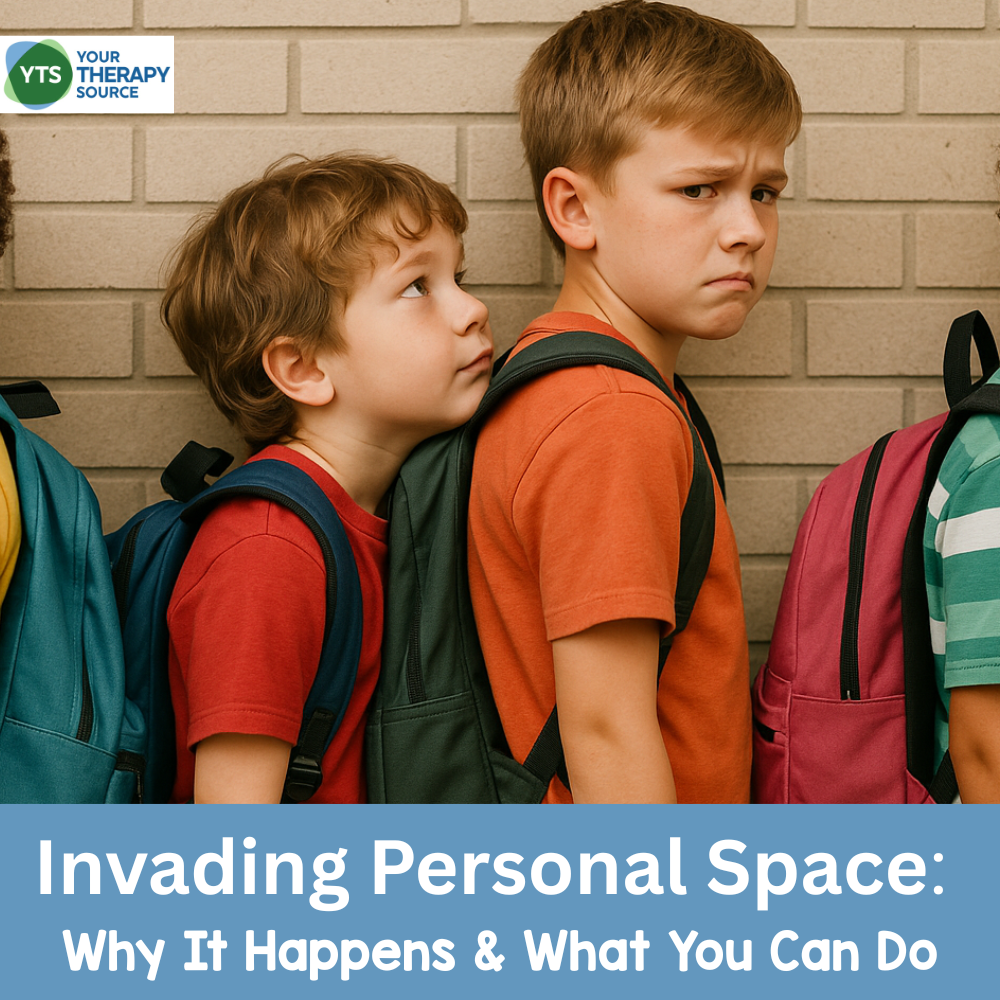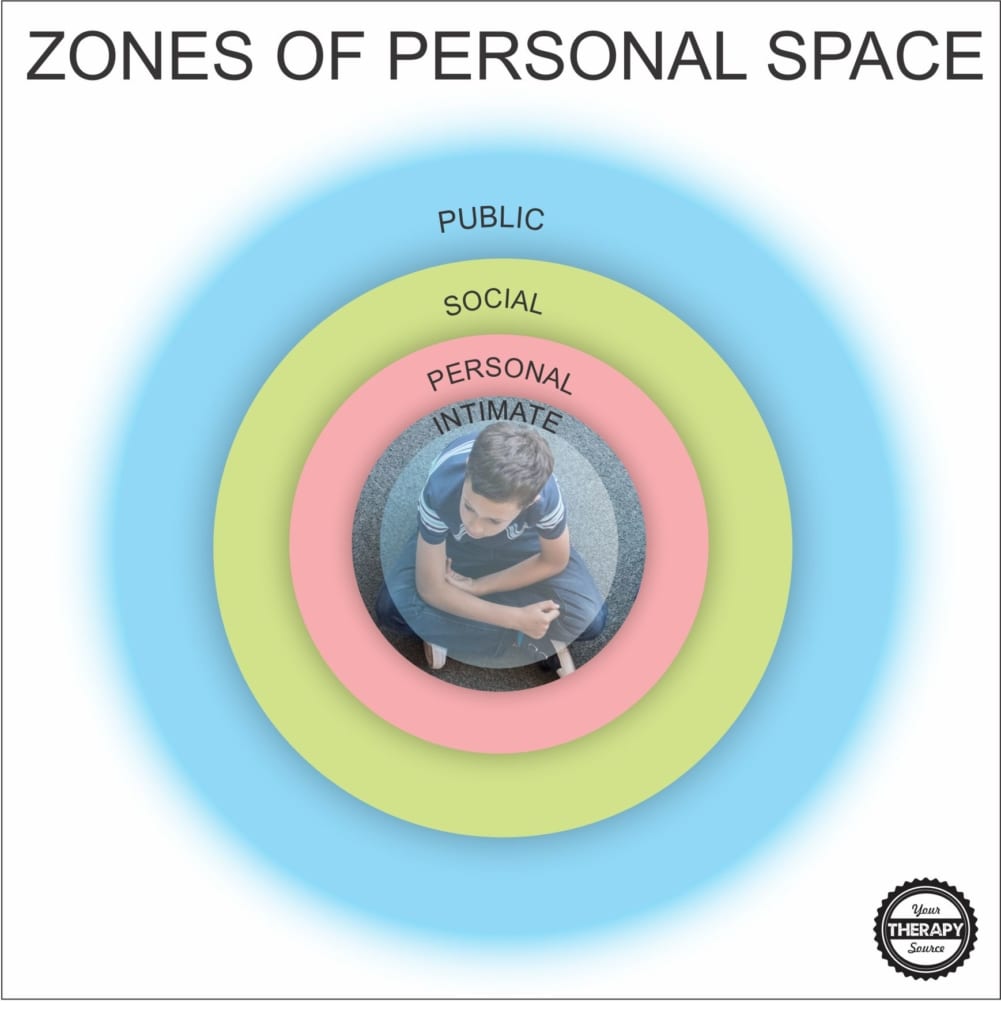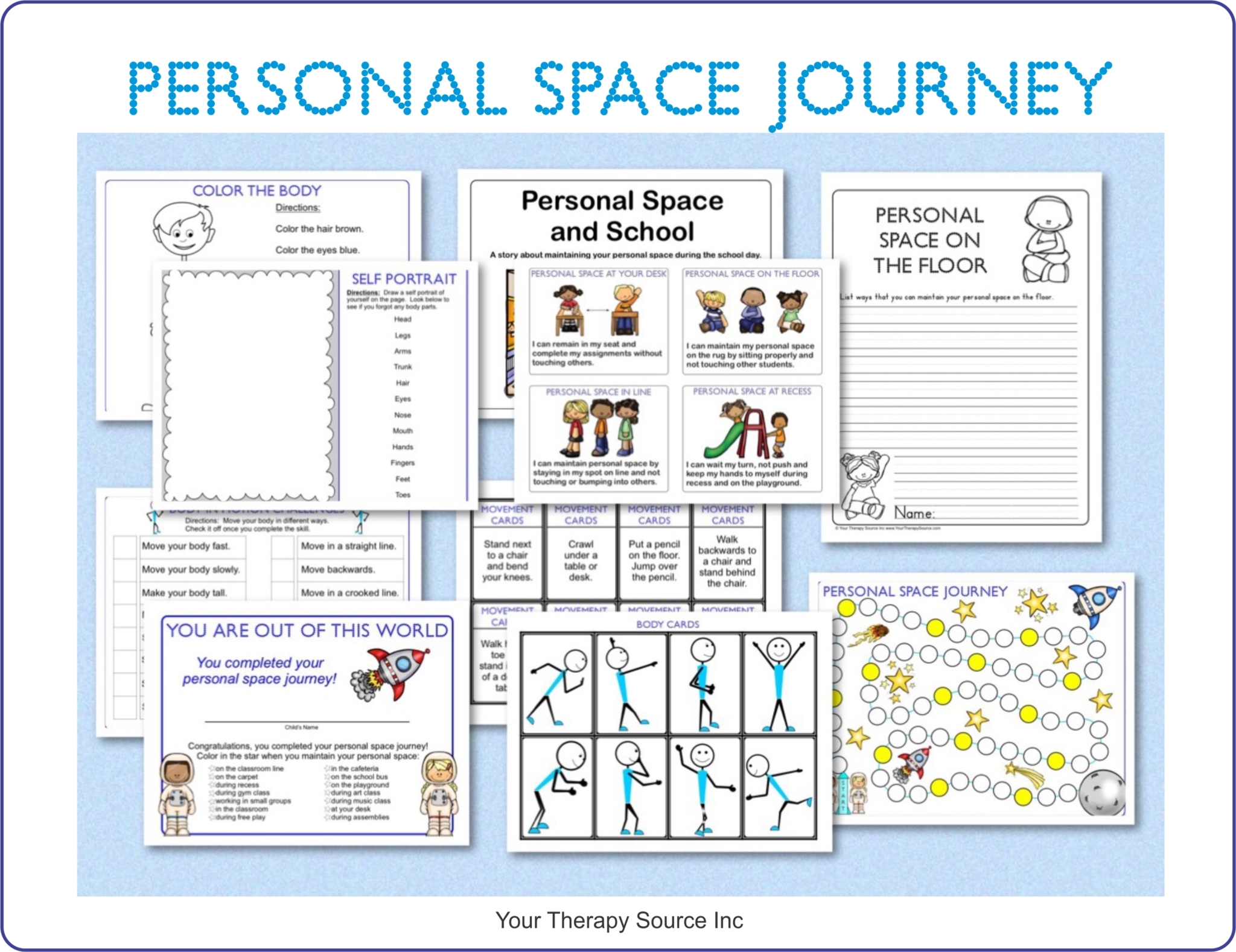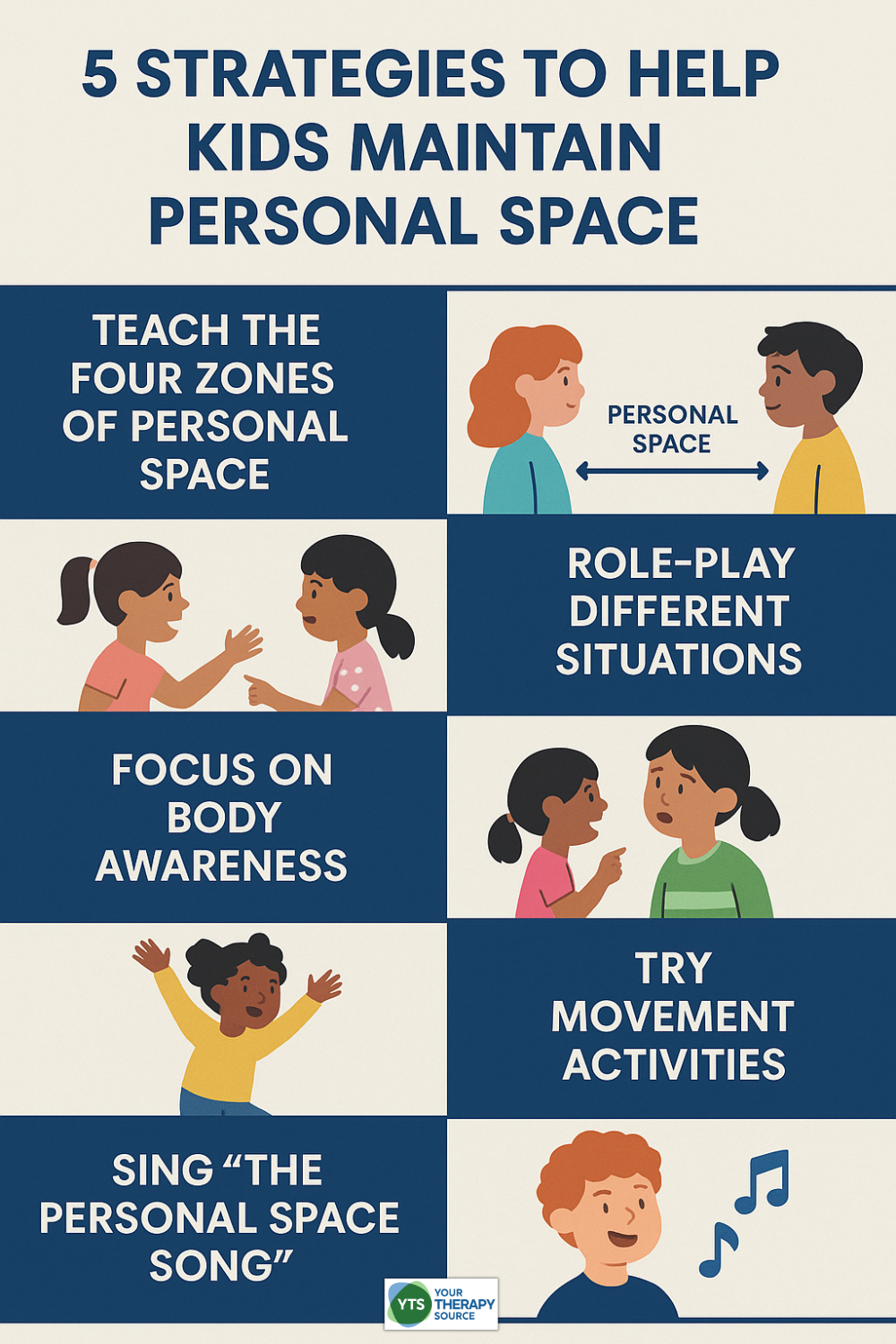Invading Personal Space: Why It Happens & What You Can Do
Picture a child waiting in line at school who keeps stepping closer until they are pressed up against the person in front of them. The other child shifts and looks uncomfortable, but the first child doesn’t seem to notice. This is a clear example of invading personal space, and it can create tension, frustration, and even social rejection.
For many children, invading personal space is not about misbehavior or defiance. It often comes from difficulties with body awareness, sensory needs, or self-regulation. These challenges make it harder to know how much distance feels comfortable in different settings. With support and practice, children can learn to build awareness of personal space and develop stronger social interactions.

What Is Personal Space and Why Does It Matter?
Personal space is like an invisible bubble that surrounds each person. It helps us feel safe, respected, and comfortable around others. The size of that bubble changes depending on the situation, the environment, and who we are with. Sitting close to a parent on the couch feels natural. Sitting just as close to a classmate during story time usually does not.
Researchers and educators often describe four general zones of personal space. Intimate space is reserved for close family or very close friends. Personal space is for casual conversations and friends. Social space is for classmates and group interactions. Public space is for larger audiences or public speaking. Learning these differences takes time, and not every child develops this skill on their own.


Personal Space Worksheets
Why Do Children Invade Personal Space?
There are several reasons why some children move in too close to others or do not notice when someone else is uncomfortable.
Body awareness challenges: When children struggle with proprioception, they have difficulty sensing where their body is in space. This makes it harder to judge how close they are to someone else.
Sensory seeking behavior: Some children crave extra touch, pressure, or closeness. They may move closer to satisfy that need without realizing it feels uncomfortable to others.
Impulse control difficulties: Even if a child knows the rules about personal space, it can be hard to stop themselves when they are excited, tired, or upset.
Trouble reading social cues: Some children miss subtle signals like a peer stepping back, crossing their arms, or turning away.
Inconsistent environments: If personal space expectations are not taught or reinforced, children may not understand when close proximity is acceptable and when it is not.
These challenges can lead to behaviors such as leaning in too close when talking, hugging without asking, bumping into others, or sitting shoulder to shoulder when more space is available.
Strategies to Help Children Respect Personal Space
The good news is that personal space can be taught. Here are some strategies that make the concept easier to understand.
Teach and Practice Personal Space Zones
Introduce the idea of personal, social, and public zones. Use role-play activities to show what each one looks like. Practice situations such as greeting a friend, asking a question, or waiting in line.
Provide Visual and Physical Cues
Use hula hoops to help children see the size of their personal bubble. Place taped circles or carpet squares on the floor to show where to stand. Post visuals in the classroom or home as reminders of what “just right” spacing looks like.
Build Body Awareness with Movement
Activities that provide heavy work or movement help children feel where their body is in space. Try wheelbarrow walking, crawling through tunnels, pushing or pulling weighted objects, or mirror games where a child copies another’s movements without touching. Obstacle courses can also improve awareness and control.
Use Music and Songs
Songs and rhymes are powerful teaching tools. The Personal Space Song pairs words with actions, making it fun and memorable for children to practice boundaries. Singing and moving together creates a playful, low-stress way to reinforce the concept.
Incorporate Social Stories and Video Modeling
Short stories about respecting personal space help children see what the behavior looks like in daily life. Videos or peer demonstrations can also be powerful, showing children exactly how to approach, stand, or play without crowding.
Offer Sensory Breaks
Children who are dysregulated often have more difficulty keeping space. Embedding short movement breaks or calming sensory activities throughout the day helps them stay organized and better able to monitor distance.
Reinforce and Monitor Progress
Celebrate when children respect personal space with praise or small rewards. Use checklists or rubrics to observe how they manage space in different settings like the classroom, playground, or home. Provide gentle reminders as needed, but gradually fade prompts to encourage independence.
Sample Activities to Try
- Bubble Walk: Children walk around pretending to carry an invisible bubble, trying not to bump into anyone.
- Hoop Freeze: Each child stands in a hula hoop and freezes when signaled, staying inside their own bubble.
- Mirror Poses: Partners copy each other’s poses while maintaining space between them.
- Role-Play Scenarios: Practice common situations like waiting in line or asking for help while keeping the right distance.
- Personal Space Song: Use the song as a fun classroom activity to review and practice boundaries.
- Tape Zone Challenge: Create circles on the floor with tape and have children move to the correct zone based on a scenario.
Supporting Children Long Term
Helping children learn about personal space takes time and patience. Observe when and where challenges happen most often. Adjust supports and activities to meet the child’s needs. Teach peers simple, kind ways to signal when someone is too close. Work with therapists or educators if body awareness or sensory issues continue to impact progress.
Invading personal space is not just about manners. It is often a sign that a child needs extra support with body awareness, sensory regulation, or social understanding. With clear instruction, fun activities, and consistent reinforcement, children can learn to respect personal space and feel more comfortable in social settings. Over time, you will see stronger friendships, calmer classrooms, and children who are more confident navigating the world around them.



